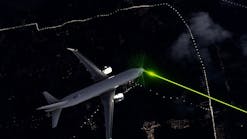Wi-Fi has become the fabric of our connected lives. It’s hard to picture a world without it because the technology has rapidly revolutionized nearly every aspect of the last two decades, and the pace of its change on society and economy has been staggering.
Back in 2001 when Boingo was founded, we dreamed of a world where people could connect to the wireless internet anywhere, with any device. Fast forward almost 17 years and that dream is reality. Today there are more Wi-Fi devices in use than there are people on Earth and over half of the internet’s traffic traverses Wi-Fi networks. In the U.S. alone, the estimated wireless industry GDP impact is at more than $282 billion.
Despite its worldwide influence, Wi-Fi is viewed by most people as invisible technology that just works. Many do not realize the tremendous amount of engineering that goes into delivering seamless connectivity and what it takes to light up a powerful Wi-Fi network. As any airport pro knows, passengers now expect wireless connectivity at every step of their journey and there is much effort happening behind the scenes to meet this demand. And with mobile data consumption continuing to skyrocket—increasing seven-fold by 2021—the wireless landscape at airports will only continue to expand with new opportunities … and new challenges.
Staying ahead of airport wireless trends is imperative as innovation is accelerating faster than ever before. Preparing for 5G, securing networks from outside threats and embracing new technologies for operational efficiencies and passenger satisfaction is critical. Here’s what to know about the evolving wireless ecosystem and how to prepare for the future.
5G is Coming
5G will be a gamechanger for connectivity. Buzz is building for this next and newest wireless standard that will succeed 4G because 5G is more than just a network upgrade, it represents a transformational shift in mobile services. Gone are the days of building a network only for mobile phones. 5G is engineered for a new generation, where billions of connected things will power smart buildings, smart cities, smart homes—and smart airports.
5G will deliver unbelievably fast broadband speeds, ultra-low latency and massive capacity.
When using 4G it takes approximately six minutes to download a two-hour movie. Fast forward to 5G and this same movie can be downloaded in a mere 3.6 seconds thanks to speeds of 10 Gbps+.
A flurry of 5G activities will continue over the next 20+ months, with larger commercial availability hitting in 2020 and post-2020—underscoring the need for airports to start mapping out their 5G strategies without delay. In recent years, airports have densified wireless using a mix of cellular distributed antenna systems (DAS) and Wi-Fi to combat the rapid growth of mobile data consumption. With 5G, densification strategies will be amplified, requiring “hyper-dense” network environments that bring even more nodes closer to the end user.
High-frequency millimeter waves, which will be part of 5G’s DNA, are driving hyper-densification, because they are capable of delivering extreme data speeds and capacity to reshape connectivity. The challenge though is millimeter waves have poor transmission—they are susceptible to blockage and typically can’t penetrate walls. To solve this, airports will be hard pressed to add more base stations, antennas and access points.
Wi-Fi Innovation is Heating Up
Unlicensed spectrum technologies like Wi-Fi are proliferating at airports because of the flexibility they offer, large swath of airwaves they make available, and the broad use cases they can power. Looking ahead, the Internet of Things (IoT) will see significant benefit from Wi-Fi, where applications like smart sensors will improve ground operations, security checkpoints, runway monitoring, baggage handling and building management.
Compared to traditional LTE, Wi-Fi has a lower cost of infrastructure, reduced latency, more throughput, can serve all endpoints respective of carrier affiliation, and is easier to deploy, making it a must have for airport wireless coverage. And the next generation of Wi-Fi, 802.11ax, presents even more exciting opportunities, as this new standard is engineered to handle an increased number of devices on a single network.
802.11ax will be significantly faster and less congested, while boasting new features like target wake time scheduling, which helps improve battery life. The technology works best in dense network environments and we can expect the standard to start making its way into Wi-Fi chipsets as early as this year.
Outside of 802.11ax, there is 802.11ad is hitting the market, which is built for high-bandwidth, short-range scenarios. These new advancements allow us to boast greater spectral efficiency to handle more mobile complexities—which is required for airports to keep up in the new connected world.
Fast, Dense Networks Win Out
Speed, coverage, capacity, security and availability are all attributes that must be present in an airport wireless network to meet and exceed passenger expectations. Fast speeds are paramount; however, the assumption cannot be the higher the number, the better the experience. Consider that the recommended speed to stream a Netflix movie in HD is 5 Mbps and there are few instances where a user requires more speed than that. Accommodate speeds that match travelers’ mobile activities and look to other features like density and coverage to round out an optimal user experience.
Density is key for ensuring networks do not get overloaded during peak traffic, whether an overcrowded gate or the height of holiday travel season. Coverage must be present to deliver connectivity throughout the airport—from taxi cab to boarding gate to baggage claim. But the network feature at the top of the list is robust security, an important matter that should be prioritized at every level of an airport’s organization.
Security is Crucial
Security starts with prevention planning. Encrypting critical systems, adding security policies and backing up systems should be a standard protocol for airport IT teams. Diligence in ongoing security training should be a recurring habit as well, but third-party service providers are what can make a big difference in adding further security to protect and safeguard wireless systems against threats.
As many major airports are owned and operated by public entities, they may be more vulnerable to an attack if the network is managed in-house. Alternatively, when the network is run outside of the airport and governing municipality, there is an independent layered security architecture that can help prevent a system from being compromised and immediately remedy a situation should there be an instance.
Security is an incredibly serious matter and if your airport’s protocols are in question, contact a third-party expert to review how they can be improved upon.
Convergence is the Future
As wireless expands its role through new technologies, convergence and interoperability come into focus. The unified aggregation of multiple spectrum bands—converging licensed, unlicensed and shared spectrum—is approaching, where consumers will not know if their connectivity is coming from Wi-Fi or cellular bands, as networks will be blended through a centralized controller. This future of wireless will be a system of converged infrastructure that opens a larger pool of airwaves, creating more lanes for wireless connections with less RF congestion.
To prepare for convergence, airports must operate wireless on all sides of the spectrum, leveraging cellular solutions like DAS and small cells, unlicensed networks like Wi-Fi, and shared spectrum like CBRS 3.5 GHz, recently branded as OnGo. CBRS stands for Citizens Broadband Radio Service and is a U.S.-based initiative that dynamically allocates 3.5 GHz spectrum on demand to anyone for their exclusive use. Think of it as another piece of carrier-grade spectrum that we can deploy in airports to deliver coverage and solve the mobile data crunch.
A technology called Passpoint is an entry way into convergence that airports should adopt if they haven’t already. Consumers with a Passpoint profile installed on their device can enjoy a converged connection from the moment they enter the airport.
Passpoint enables travelers to seamlessly roam between Wi-Fi hotspots and cellular for a truly ubiquitous connected experience that removes the headaches of log-ins, passwords and other frustrations. Passpoint provides an encrypted connection automatically, with no additional software or Virtual Private Network (VPNs) needed. With several IEEE 802.11 security features, the technology transforms the security position of devices connected to hotspots with guaranteed mutual authentication and over-the-air encryption, as well as restricted peer-to-peer traffic, helping to protect sensitive information such as passwords. Additionally, the end-to-end authentication protocols filter out unauthorized users and mobile devices, and protect authenticated mobile devices from connecting to rogue—and potentially unsafe—hotspots.
It’s now a wireless world where fast moving technology is shaping travel and aviation. It’s an exciting time, but be mindful of where the industry is headed to ensure world-class connectivity at your airport now and in the future.
Scott Ewalt is Boingo’s Product Management, Product Development and Customer Experience lead. As Vice President, he is responsible for managing Boingo's commercial wireless product portfolio—including managed Wi-Fi, carrier solutions, managed network services, and data analytics products. This includes overseeing Boingo's “Customer 360” strategy, a data-driven approach to integrating qualitative and quantitative insights to enhance every touchpoint in the customer journey across the company’s product portfolio.
Prior to Boingo, Ewalt worked in digital marketing for Move Inc., the operator of Realtor.com, and in media planning on the Coca-Cola and McDonald’s accounts at ad agencies in Los Angeles and New York.
Ewalt holds an MBA from Pepperdine University’s George L. Graziadio School of Business and Management and a bachelor of arts from University of Southern California.


![Logo Notag Hex[1]x100 Logo Notag Hex[1]x100](https://img.aviationpros.com/files/base/cygnus/cavc/image/2020/10/logo_notag_hex_1_x100.5f9c63c6d8cae.png?auto=format,compress&fit=fill&pad=5&fill-color=white&q=45&h=139&height=139&w=250&width=250)


